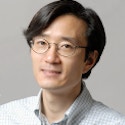Simons Investigators
- Email:
[email protected]
Simons Investigators are outstanding theoretical scientists who receive a stable base of research support from the foundation, enabling them to undertake the long-term study of fundamental questions.
The Investigator program has been discontinued.
Simons Investigators in Mathematics, Physics, Astrophysics and Computer Science
The intent of the Simons Investigators in Mathematics, Physics, Astrophysics and Computer Science programs is to support outstanding theoretical scientists in their most productive years, when they are establishing creative new research directions, providing leadership to the field and effectively mentoring junior scientists. A Simons Investigator is appointed for an initial period of five years. Renewal for an additional five years is contingent upon the evaluation of scientific impact of the Investigator.
Simons Investigators in Mathematical Modeling of Living Systems (MMLS)
This program aims to help the research careers of outstanding scientists working on mathematical and theoretical approaches to topics in the life sciences. A Simons Investigator in MMLS is appointed for five years.
Math+X Investigators
This program encourages novel collaborations between mathematics and other fields in science or engineering by providing funds to professors to establish programs at the interface between mathematics and other fields of science or engineering. A Math+X Investigator is appointed for an initial period of five years. Renewal for an additional five years is contingent upon the evaluation of scientific impact of the Investigator.
- Email:
[email protected]
- Email:
[email protected]
2013
Ngô Bảo Châu, Ph.D.
University of Chicago
Ngô’s proof of the fundamental lemma, a deep conjecture of Langlands, inaugurated a new geometric approach to problems in harmonic analysis based on arithmetic geometry. His ideas have already inspired work in many areas, including mathematical physics and geometric representation theory.
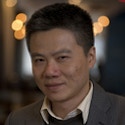
Maryam Mirzakhani, Ph.D.
Stanford University
Mirzakhani’s work was focused on Teichmüller theory and dynamics of natural geometric flows over the moduli space of Riemann surfaces. One of her major results, in joint work with Eskin and Mohammadi, is a proof that stationary measures for the action of SL2(R) on the space of flat surfaces are invariant, a deep and long-standing conjecture.

Kannan Soundararajan, Ph.D.
Stanford University
Soundararajan is one of the world’s leaders in analytic number theory and related areas. His work is focused on understanding the zeros and value distribution of L-functions, and on analyzing the behavior of multiplicative functions. In particular, his work (together with co-authors) has led to weak subconvexity bounds for general L-functions and to the proof of the holomorphic quantum unique ergodicity conjecture of Rudnick and Sarnak.
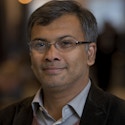
Daniel Tataru, Ph.D.
University of California, Berkeley
Tataru’s work on nonlinear waves has been deep and influential. He proved difficult well-posedness and regularity results for many new classes of equations. This includes geometric evolutions such as wave and Schrödinger maps, quasilinear wave equations, some of which are related to general relativity, as well as other physically relevant models.
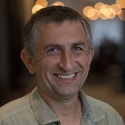
Rajeev Alur, Ph.D.
University of Pennsylvania
Rajeev Alur is a leading researcher in formal modeling and algorithmic analysis of computer systems. A number of automata and logics introduced by him have now become standard models with great impact on both the theory and practice of verification. His key contributions include timed automata for modeling of real-time systems, hybrid automata for modeling discrete control software interacting with the continuously evolving physical environment, and visibly pushdown automata for processing of data with both linear and hierarchical structure such as XML documents.

Piotr Indyk, Ph.D.
Massachusetts Institute of Technology
Piotr Indyk is noted for his work on efficient approximate algorithms for high-dimensional geometric problems. This includes the nearest neighbor search, where given a data point, the goal is to find points highly similar to it without scanning the whole data set. To address this problem, he co-developed the technique of locality sensitive hashing, which proved to be influential in many applications, ranging from data mining to computer vision. He has also made significant contributions to sublinear algorithms for massive data problems. In particular, he has developed several approximate algorithms for massive data streams that use very limited space. Recently, he has co-developed new algorithms for the sparse Fourier transform, which compute the Fourier transform of signals with sparse spectra faster than the FFT algorithm.
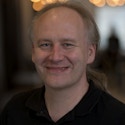
Salil P. Vadhan, Ph.D.
Harvard University
Salil Vadhan has produced a series of original and influential papers on computational complexity and cryptography. He uses complexity-theoretic methods and perspectives to delineate the border between the possible and impossible in cryptography and data privacy. His work also illuminates the relation between computational and information-theoretic notions of randomness, thereby enriching the theory of pseudorandomness and its applications. All of these themes are present in Vadhan’s recent papers on differential privacy and on computational analogues of entropy, which are elegant, impressive, and far-reaching.

Victor Galitski, Ph.D.
University of Maryland, Baltimore
Victor Galitski is a creative and productive scientist who at an early stage in his career has made many important contributions to diverse areas of quantum many-body physics, including applications of quantum theory to cold atomic gases, the theory of exotic spin models, topological insulators and topological superconductivity, quantum fluctuation phenomena, and the dynamics of periodically pumped systems. He is particularly known for his predictions of topological Kondo insulators (supported by recent experiments in samarium hexaboride), as well as his proposals for using multiple laser beams to realize spin-orbit physics in cold atomic gasses, which led to the discovery by Spielman and collaborators of the spin-orbit coupled Bose condensates he predicted.

Randall Kamien, Ph.D.
University of Pennsylvania
Randall Kamien is a leading figure in the theory of topological effects in condensed matter physics, known for the mathematical rigor he brings to his work and in particular for the use of sophisticated and elegant geometrical methods to obtain insight into fundamental aspects of the structure of polymers, colloids, liquid crystals and related materials and into the topological defects occurring in these materials.

Joel Moore, Ph.D.
University of California, Berkeley
Joel Moore is one of the leaders in the study of the topological aspects of electronic physics, particularly known for this work with Balents on strong topological insulators and his work with Orenstein and Vanderbilt on magnetoelectric couplings and optical responses induced by geometric and topological terms in various material classes. He has also obtained significant results on nonequilibrium dynamics of interacting quantum systems, significantly elucidating the role of quantum entanglement in these phenomena.

Dam Thanh Son, Ph.D.
University of Chicago
Dam Thanh Son’s work has deep impact across several subfields of physics. He has written important papers in quantum chromodynamics, theoretical nuclear physics, condensed matter physics and atomic physics. One of his many contributions concerns the duality between black holes in anti-de Sitter space and strongly interacting fluids. His initial work with Policastro and Starinets on the viscosity of the quark-gluon plasma opened new research directions in heavy ion physics and in string theory, and his subsequent work with Sachdev, Herzog and others established the AdS/CFT duality as a crucial theoretical tool of condensed matter physics. His recent work has helped the uncovering of a non-trivial connection between the quantum Hall effect, spin liquids and dualities in quantum field theories.
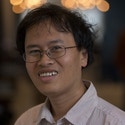
Senthil Todadri, Ph.D.
Massachusetts Institute of Technology
Senthil Todadri’s work with Fisher on Z2 topological order in models of spin liquid states provided key insights and initiated the systematic investigation of gauge structures in many-body systems, now a vital subfield of condensed matter physics. Senthil and co-workers also pioneered the theory of deconfined quantum criticality as a new paradigm for some phase transitions. Senthil and collaborators also introduced the concept of fractionalized Fermi liquids and developed a theory of continuous electronic Mott transitions. His most recent work in the theory of symmetry-protected topological phases and on combining ideas of quantum entanglement and many-body physics continues to move the boundaries of the field quantum many-body physics.

Xi Yin, Ph.D.
Harvard University
Xi Yin is one of the outstanding members of the new generation of theoretical physicists, known for his work on fundamental problems of quantum gravity, including new insights into black hole entropy, for his work with Giombi on higher spin gravity, and for helping to establish the Klebanov–Polyakov conjecture and extensions of the gauge/gravity dualities. He is also credited with important work on supersymmetric Chern–Simons theories and associated connections to M-theory.
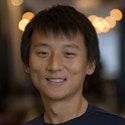
Maarten de Hoop, Ph.D.
William Marsh Rice University
Maarten de Hoop will join Rice University on July 1, 2015, as the Simons Chair in Computational and Applied Mathematics and Earth Science. De Hoop comes to Rice from Purdue University’s Department of Mathematics and Department of Earth, Atmospheric and Planetary Sciences where he has been a professor since 2005. His research interests are in inverse problems, microlocal analysis and computation, and applications in exploration and global seismology and geodynamics. In addition to his appointments at Rice and Purdue, de Hoop has been on the faculty of Colorado School of Mines, is a visiting faculty member at Massachusetts Institute of Technology and the Graduate University of Chinese Academy of Sciences in Beijing, and was a senior research scientist and program leader with Schlumberger Gould Research Center. De Hoop has been a scientific advisor with Corporate Science and Technology Projects, Total American Services, Inc., since 2010. He received his Ph.D. in technical sciences from Delft University of Technology in the Netherlands in 1992.
Over the last 15 years, de Hoop has received significant research support from the energy industry. At Purdue, de Hoop founded the Geo-Mathematical Imaging Group, an industry-university consortium project. He is a member of the Society for Industrial and Applied Mathematics, the American Mathematical Society, the American Geophysical Union, the Society of Exploration Geophysicists, from which he received the J. Clarence Karcher Award, and the Institute of Physics, where he has been a fellow since 2001.
As the Simons Chair, he will continue to work to promote interaction between mathematicians and scholars from other disciplines, and collaboration among academia and industry.

Yun S. Song, Ph.D.
University of California, Berkeley
Yun S. Song was originally trained in mathematics and theoretical physics, but since receiving his Ph.D. in physics from Stanford University in 2001, he has been carrying out interdisciplinary research at the interface between biology and applied mathematics, computer science and statistics. He is particularly interested in statistical inference problems in population genetics, a branch of evolutionary biology closely related to several areas of mathematics, including probability theory, stochastic processes and combinatorics.
Since 2007, Song has been on the faculty in the Departments of Statistics and Electrical Engineering & Computer Sciences at the University of California, Berkeley. He was the chair/organizer of a semester-long interdisciplinary program on “Evolutionary Biology and the Theory of Computing,” held in Spring 2014 at the Simons Institute for the Theory of Computing. As the Calabi-Simons Chair in Mathematics and Biology at the University of Pennsylvania, he will work to promote the interaction between mathematicians and scholars from other disciplines with research interest in biology.
Song’s honors and awards include an NIH Pathway to Independence Award K99/R00 (2006), an Alfred P. Sloan Research Fellowship (2008), a Packard Fellowship for Science and Engineering (2008), an NSF CAREER Award (2009), Jim and Donna Gray Faculty Award for Excellence in Undergraduate Teaching (2013) and a Miller Research Professorship (2014).
